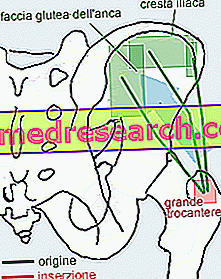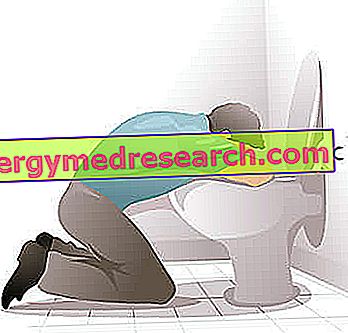By Dr. Dario Mirra

So, in such anarchy, Functional Training has run the risk of getting lost among the different trends and fashions that come up every day.
Introduction
It can be said that Functional Training is physiology!
It simply consists in administering to the body stressors that go to increase the different physiological parameters, not hitting the system from a single "side", but making hordes of cascading stimuli arrive.
So, in this context, methods that use principles typical of Body Building, Weightlifting, kettlebells, athletics, etc. are welcome. The stimulus in this sense must be aimed at increasing all the parameters from an aesthetic point of view, healthy and functional.
To whom has it never happened to see monsters of hypertrophy who could not even pull up a bar?
Swimmers who had a squat ceiling equivalent to the weight of a liter of water?
To Runners who had the same coordination as a fork athlete?
Or some person addicted to overloads who couldn't even bend forward to touch their shins with their palms?
So is functional training a fad or a necessity?
The answer could already be taken for granted in stating that functional training is physiology, or that it tends to the development of all those parameters capable of making, from a muscular, coordinative point of view etc. the whole system to every type of proposed work.
Therefore, this method should be seen and combed in all its meanings, aims and objectives.
What goals
- DIVERSIFICATION OF TRAINING STIMULI.
The intent is to create a machine capable of adapting to every situation, from being able to lift a maximum load, to move quickly, to jump as high as possible, but also to make a front cut.
- FOR MENTAL AND PHYSICAL RECOVERY.
Think of a javelin throwing athlete, weight thrower, or runner.
These subjects spend most of their training, always repeating the same gesture, with the necessary differences depending on the competitive period and the coach's choices.
One can imagine what kind of stress it can be for the mind to repeat a motor sequence to the point of exasperation - certainly to achieve sports mastery is essential - but no doubt it must be admitted that for how much passion one may have, for how much competitive power one has available, boredom can begin to appear.
Think also of the stress imposed on the structures assigned to the execution and stabilization of the movement (muscles, tendons, joint capsules, cartilage, ligaments, etc.), in repeating the same work angles, the same loads (almost always), the same application of force.
All this means repetitiveness, which means being exposed to wear, and therefore to injury.
- FOR A GREATER COORDINATIVE STIMULUS.
The greater the motor experience of the person or athlete, the greater the performance, both in front of an already acquired motor task, then structured at a coordinative level, and when a new situation occurs.
Furthermore, the real performance increases when working with tools or simply with any gesture that is part of a workout in general - both when it comes to hypertrophy, the different components of strength, and the different components of resistance - can take place effectively when the nervous system has already assimilated the movement, when it has already eliminated the superfluous and adaptation components to the task.
- OTHER PHYSIOLOGICAL REQUIREMENTS.
Here examples of these can be done galore, let's start with the much sought after muscle mass, a popular destination for most gear room users. Hypertrophy is nothing more than the increase in contractile proteins, the connective tissue system, the capillary network and energy deposits at the muscle level, in which it participates, from what has recently been shown also by the increase in the muscle fibers themselves, hyperplasia.
Apart from this excessive simplification, muscle mass can have purely aesthetic purposes, so let's talk about aesthetic hypertrophy, or be necessary to perform a given activity, in this case called functional hypertrophy. The first uses the proper methods of Body Building and goes in search of the volume and proportion between the different districts of the body. Functional hypertrophy, on the other hand, is specific to every sport, for every type of activity, and therefore adapts to specific requests and tends to a particular optimum for every sporting activity.
Now, the increase in muscle mass, a pivotal moment for any self-respecting physical preparation, whether it be aesthetic or functional, can be accompanied by some problems, such as imbalances between the different muscles, exacerbation of some paramorphisms and postural alterations.
Still, working with overloads, as is well known by now, during muscle contractions limits and sometimes prevents blood circulation in some phases, it is known that a contraction already of 20% of 1RM begins to create problems in the arterial circulation in a given district, and at 50% of 1RM there is complete occlusion of the vessels.
Furthermore, the weight lifting belt and the Valsalva maneuver, expedients used in any work with a certain weight, perform their function by increasing the IAP (intra abdominal pressure) which is estimated at around 0-3 mmHg, and is established in a physiological limit within 10 mmHg, with the due differences due to the site of measurement, position of the patient, respiratory phase, and c ... can be increased by coughing, vomiting, sneezing, defecation, by maneuver of First mentioned Valsalva is from physical activity, during which it can reach peaks of even 100 mmHg.
Some activities, therefore, can lead to an increase in blood pressure, intrathoracity, intra-abdominal etc ... leading to a reduction, certainly very short, of the reflux of blood to the heart; with the possibility also to be able to thus increase problems in case there are hemorrhoids, hiatal hernias, etc. ... diversifying the stimulus in all these cases, adjusting recovery times, stimuli that tend to strengthen the various systems, could be useful in a framework of prevention and maintenance of all these parameters under the right control.
- TECHNICAL EXCELLENCE.
During my career, both study and work, I have noticed with some custom that the clichés that permeate the use of overloads are much more voluminous and concrete than those that are the notions of physiology and biomechanics or any tangible science ; hence the various gurus who through word of mouth have become the monsters of knowledge of wrong news, but who in some gyms are acclaimed as gods, with their "swear words" that still resound in sports centers as pearls of wisdom.
About this, I came across more than once in characters who talked to me about weight-loss exercises, mass-training exercises, Powerlifting Squats, Body Building Squats!
But whatever exercise is done, with the same speed, intensity and volume, is the energy system used not always the same? Isn't muscle contraction always that? Do contractile proteins not flow the same way? So why with an exercise with the same parameters should I lose weight and with another I should grow out of proportion?
Then Squat from Powerlifting and Body Building Squats, Body Building Cut, Powerlifiting Cut-Out! As if biomechanics changed its rules in the two different sports. The two activities certainly through the same medium (Sovraccarichi), try to achieve different goals.
Body Builders usually work with a medium-high number of repetitions, split training into split-routines, work with both multi-joint and isolation exercises, undergo work where fatigue is accumulated, create muscle structure injuries same to obtain a supercompensation aimed at the exasperation of muscle volumes.
The Powerlifters. instead, they work with a low number of repetitions, they use purely multi-joint exercises (isolation exercises are generally used to train auxiliary muscles and stabilizers), they try not to combine fatigue, the main objective of their work is to raise monstrous loads.
Perhaps from this comes the misunderstanding, the Powerlifters to be able to move all that weight must take care of the gesture up to exasperation, with a manic acribia. For Body Builders, on the other hand, perhaps some imperfection can be granted ... and I say maybe it can be granted, because, to get huge muscles the load, even in their case it must be monstrous: what muscles can be gained with an exercise done at the least worst and with professional confetti thrower loads?
CONTINUE: second part »



